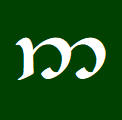8.572 to Sprout, Bud, Blossom Q. losta- v. “to bloom, *blossom” A verb for “to bloom” appearing in notes from the late 1960s as a derivative of √LOT(H), but in that document it was deleted (PE17/26). However losta- “to bloom” reappeared in notes on The Rivers and Beacon-hills of Gondor
Select Elvish Words 8.571: Bloom
8.571 Bloom ⚠️Q. alalmë n. “inflorescence” A word appearing as {alalbe >>} alalme “inflorescence” in notes from around 1959, derived from √GAL² (PE17/153). Compare this to [ᴹQ./ᴱQ.] alalme “elm” from The Etymologies of the 1930s and the Qenya Lexicon of the 1910s (Ety/ÁLAM; QL/29); in the 1959 notes Tolkien decided
Select Elvish Words 8.57: Flower
8.57 Flower ⚠️Q. alma n. “flower” A word for “flower” derived from primitive ✶galmā in notes on flowers in the same bundle containing Definitive Linguistic Notes (DLN) from 1959 (PE17/153). Initially Tolkien said alma meant both “a blessed thing and a flower”, then said that Q. almë was “a blessed
Select Elvish Words 8.565: Thorn
8.565 Thorn ᴱQ. ekkia adj. “thorny” A word appearing as ᴱQ. ekkia “thorny” in the Qenya Lexicon of the 1910s, an adjectival form of ᴱQ. ekke (ekki-) “thorn” (QL/35). Neo-Quenya: For purposes of Neo-Quenya, I would update this word to ᴺQ. eccoia “thorny” based on the later word [ᴹQ.] ecco
Select Elvish Words 8.56: Leaf
8.56 Leaf Q. lassë n. “leaf; ⚠️[ᴱQ.] petal” The basic Quenya word for “leaf”, derived from the root √LAS¹ (PE17/62, 153; VT39/9). This word dates all the way back to the Qenya Lexicon of the 1910s where ᴱQ. lasse “leaf” appeared as its own entry (QL/51). ᴹQ. lasse “leaf” also
Select Elvish Words 8.55: Branch
8.55 Branch Q. olba n. “branch” A noun for “branch” in The Shibboleth of Fëanor from 1968 derived from primitive √OLOB (PM/341). It may be a variant of olva “plant”, since lv was sometimes pronounced lb (LotR/1121; PE17/129). Conceptual Development: The Etymologies of the 1930s had ᴹQ. olwa “branch” derived
Select Elvish Words 8.53-8.54: Plant, Root
8.53 Plant, Herb Q. laima n. “plant” A noun for “plant” appearing in Quenya Notes (QN) from 1957 derived from the root √LAY (PE17/159). Conceptual Development: The Qenya Lexicon of the 1910s had ᴱQ. laute (lausi-) “living thing, (esp.) vegetable” and ᴱQ. lauke (lauki-) “vegetable, plant species”, both derived from
Select Elvish Words 8.51-8.52: Grass, Hay
ᴹQ. liske n. “reed, [ᴱQ.] sedge” A word mentioned in the Outline of Phonetic Development (OP1) of the 1930s, with the gloss “reed” and derived from primitive ᴹ✶lisge (PE19/51). Conceptual Development: The word/root ᴱQ. LISKE “sedge, reeds” appeared in the Qenya Lexicon of the 1910s (QL/55). In the contemporaneous Name-list
Select Elvish Words 8.41-8.45 Harvest, Grain, Wheat, Rye
8.41 Crop, Harvest ᴱQ. silkesse n. “harvest [product], *produce” A noun appearing as ᴱQ. silkesse “harvest” in the Qenya Lexicon of the 1910s under the early root ᴱ√SḶKḶ¹ that was also the basis for “grass” words (QL/84). Conceptual Development: The Etymologies of the 1930s updated this root to ᴹ√SALAK+wē for
Select Elvish Words 8.32-8.33: to Reap; Sickle
8.32 to Mow, Reap ᴱQ. silki- v. “to mow, scythe, mow down” A verb appearing as ᴱQ. silki- “mow, scythe, mow down” in the Qenya Lexicon of the 1910s under the early root ᴱ√SḶKḶ¹ that was also the basis for “grass” words (QL/84). Conceptual Development: The Etymologies of the 1930s




